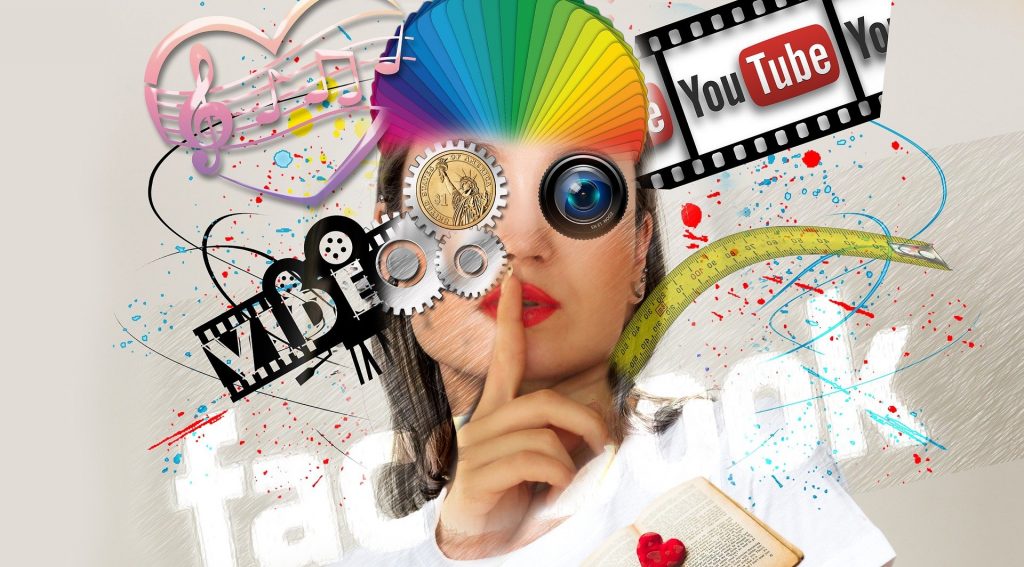 In April, U.S. pop star Katy Perry announced the launch of a new footwear collection featuring shoes inspired by her 2019 trip to Egypt. Sandals decorated with ankhs, Eyes of Horus and pyramids. Retailing for $49 to $129 and with Perry’s star power behind them, the sandals sold out on the Katy Perry Collection website in just a few days, although some remain available through Amazon U.S.
In April, U.S. pop star Katy Perry announced the launch of a new footwear collection featuring shoes inspired by her 2019 trip to Egypt. Sandals decorated with ankhs, Eyes of Horus and pyramids. Retailing for $49 to $129 and with Perry’s star power behind them, the sandals sold out on the Katy Perry Collection website in just a few days, although some remain available through Amazon U.S.
As people flocked to purchase Perry’s Egypt-inspired footwear, Egypt remained a bystander. Mona Bassel of Egyptian Streets, an independent news website, questioned whether the collection amounts to cultural appropriation. Verywell Mind, a mental health resource website defines that as the “use of objects or elements of a non-dominant culture in a way that doesn’t respect their original meaning [or] give credit to their source.”
Perry’s line, however, opens a window of opportunity for Egypt to profit from the marketing of such items inspired by ancient Egyptian culture. This could use the fascination with such symbols as the ankh and Eye of Horus to market temples in Luxor and Aswan. Alternatively, the government could encourage the export of similar products by local brands. Perry’s collection wasn’t ground-breaking, as domestic brands like Okhtein, Jude Benhalim and Temraza have offered collections inspired by ancient Egypt.
Fashion marketing
If Egypt were to capitalize on the popularity of fashion items rooted in its culture, it would have a model to follow. Between 2017 and 2019, Japan saw an increase in tourists because of the popularity of the kimono, a traditional garment with a wrapped front and large sleeves. Overseas tourists to Japan in 2017 numbered 17.9 million, second only to 2012, and the number continued to increase to 18.9 million in 2018, according to Siew Hoon Yeoh of Northstar Travel Media Asia. Calling it a ‘kimono moment,’ she wrote that it was “easy to spot the tourists — they’re the only ones wearing kimonos.”
While the traditional kimono was a heavy garment of expensive silks, variations can be found in many fashion stores today. Some kimonos abandon the traditional belt and wrapping, while others replace silk with cotton or linen. Nevertheless, the garment always looks like a kimono. Wearing a kimono, in whatever variation, offers “a break from the norm, a chance to dress up and connect to a rediscovered history” or “ an opportunity to wear something breathtakingly beautiful and feminine,” writes Alicia Joy, the Tokyo writer for Culture Trip, an online travel guide.
However, similar to criticisms of the Katy Perry Collection, some people criticize the wearing of a kimono as cultural appropriation. Co-curator of the ‘Kimono: Kyoto to Catwalk’ exhibit at the Victoria & Albert Museum in London Josephine Rout said that “there is a small, but vocal, group of people who believe that kimono should only be worn in certain ways following rules.” These concerns are usually disregarded though because through kimonos Japan is actively “trying to share Japanese culture,” said Manami Okazaki, a Tokyo-based fashion and culture writer. Japan’s former minister of economy, trade and industry, Hiroshige Seko, in 2019 described the kimono as “Japan’s cultural pride that we boast to the world.”
It was through the American Commodore Matthew Perry leading four ships into Tokyo bay in 1853 that Japan truly began to export cultural aspects of the kimono, writes CNN Style writer Allyssia Alleyne. “Industrious merchants saw an opportunity to sell their surplus luxury kimonos to a new audience hungry for exotic exports,” she said.
Similarly, Egypt is trying to share its culture with the world, even though many artifacts are being exploited by Western countries. The Rosetta Stone, for example, is still in the British Museum in London and will likely remain there along with other Egyptian artifacts. Allegations of cultural appropriation have largely gone unnoticed or been brushed off by Egyptian media. Hany Ghoaraba of Ahram Online wrote that promoting our culture abroad “is the right way to declare the rebirth of an old nation fighting to take its rightful place in the modern world.”
When Perry visited Egypt in 2019, she was the latest in a long line of celebrity Egypt fans, including Alicia Keys (who named her son Egypt), Hilary Swank, Vin Diesel and many others. All of these celebrities are not going to launch fashion brands, but the social media buzz surrounding their visits may intrigue young travelers, the segment that “is growing and the ones spending money,” says Islam Sherif, founder of Nomad, an Egyptian travel website, “We need to keep working alongside international celebrities, content creators and bloggers.”
Local production
When 22 mummies were transferred from the Egyptian Museum in Tahrir Square to the National Museum of Egyptian Civilization in Al Fustat in April, eyes turned to Egypt. Former minister of antiquities Zahi Hawass said a week before the event that “the whole world will look at the country with great respect.” The parade was live streamed on YouTube and the recording has accumulated 1.5 million views since.
The “Golden Parade” did not just include the spectacle of transferring the mummies, though, as local brands were on display in every part of the TV broadcast. Female presenters and performers wore Egyptian fashion and accessory brands. Actors in a short report shown during the broadcast donned lapel pins in the shapes of ankhs and scarabs by men’s wear brand Huwa. Most notable was Egyptian fashion brand Temraza’s show stopping pharaonic-inspired gown worn by soprano Amira Selim as she sang an ancient Egyptian hymn.
The spectacle of Egyptian fashion is a selling point for customers abroad, says Norhan El Sakkout, lead designer and founder of the Saqhoute brand. “Egypt is a charming and enchanting place for customers all over the world. Customers abroad don’t need us to explain to them why we do what we do.”
The market for fashion inspired by ancient Egypt exists internationally. Already, pharaonic symbolism has made its way to fashion shows and red carpet events watched by millions. Lebanese designer Zuhair Murad’s Spring 2020 Couture Collection shown during Paris Fashion Week was inspired by pharaonic queens. With sequins “depicting all manner of symbols, from hieroglyphs, falcons and deities,” it was an instant hit. It has been viewed 3.6 million times on YouTube and is one of the most viewed fashion shows on the platform.
It is impossible to draw a correlation between Zuhair Murad’s show and tourism in Egypt to determine whether the show has in fact boosted tourism. Just a month after the show, the COVID-19 pandemic forced airlines to halt operations. If people had booked vacations to Egypt, they were cancelled. In April 2020, Travel Pulse, a travel news website, reported “about 48 percent of Americans were forced to cancel their summer travel plans.” What could have been a litmus test for whether promoting fashion would boost tourism ended up not being any test at all.
In the Japanese model, long before there was tourism, there were exports. While there are a lot of Egyptian-inspired products in the market (the Katy Perry Collection is just one example), only a handful of Egyptian designers have managed to break onto the international scene.
The lack of Egyptian designers could be because of barriers to formalizing the brand or the inadequate technical design training. However, in the past few years, these issues have been recognized and are being remedied. Walid Darwish of the Ministry of Trade & Industry says that one focus is to “formalize the informal sector” so the products of those businesses can be exported. The ministry is working to motivate them through “incentives, training and marketing schemes.”
Additionally, Egyptian designers who have managed to break into the scene are passing on their knowledge. Jewelry designer Azza Fahmy of internationally known Azza Fahmy Jewelry, started her design studio in 2013 to “provide an international quality education through programs developed in collaboration with international teachers, designers and consultants.”
Sarah Zaki graduated from the program and went on to create her own brand, Sarah Zaki Jewelry Designs. She says one of her brand goals is to represent Egypt. “I want people around the world to appreciate our work, our art and our quality. This is how I want to be perceived,” she says. She adds that she wants the “Made in Egypt” tag to become a trademark.
Underlying issues
Promoting Egyptian fashion abroad might help tourism, but it won’t fix any of the sector’s underlying issues. In July, Egypt went viral on Reddit, an online social forum, for the wrong reasons. “What is one country that you will never visit again?” asked one user. From almost 25,000 comments on the thread, the majority named Egypt.
Most users complained about “relentless” street vendors and exploitation by shop owners. One user wrote that every time they’d go buy water, the vendor “would tell you a price, many times two or three times the price you [paid] the day before and you’d need to haggle them down.” Women visitors complained of blatant sexual harassment at tourist sites. One user, who was 15 when she visited Egypt, wrote that when she became separated from her group she was groped “in broad daylight” in a crowd of other people. Other women said they were only comfortable when accompanied by men.
Harrison Jacobs of the Business Insider website wrote in 2018 that he was “convinced Egypt could be the greatest tourist destination in the world if it weren’t for a troubling pattern that nearly ruined [his] trip.” He said he’d “felt taken advantage of by guides and had tours where operators cut corners or were outright lied to.” Jacobs wrote that while he was awestruck at the beauty of the monuments, he “couldn’t wait to leave.”
With an image problem in addition to threats to security just a decade after the Arab Spring, Egypt has the burden of proof to show it’s a worthy travel destination. Egypt’s tourism industry took a hit during the past decade, with revenue for top tourist sites plunging 95% between 2011 and 2014, according to The Guardian website. Since then Egypt has taken steps to recover these numbers, even in the midst of the COVID-19 pandemic. In April, Egypt welcomed 525,000 tourists, about half the number of visitors pre-pandemic. Minister of Tourism and Antiquities Khaled El-Enany commented at the time “that the tourist numbers are steadily rising and have almost doubled since January and February 2021.”
However, while these numbers might reflect the good faith of tourists coming to Egypt, it may not reflect their overall impressions the way Reddit comments do. In addition to opening new museums, Egypt will have to figure out a way to convince travelers that this “troubling pattern” is no more and the country promises a pleasant stay.







